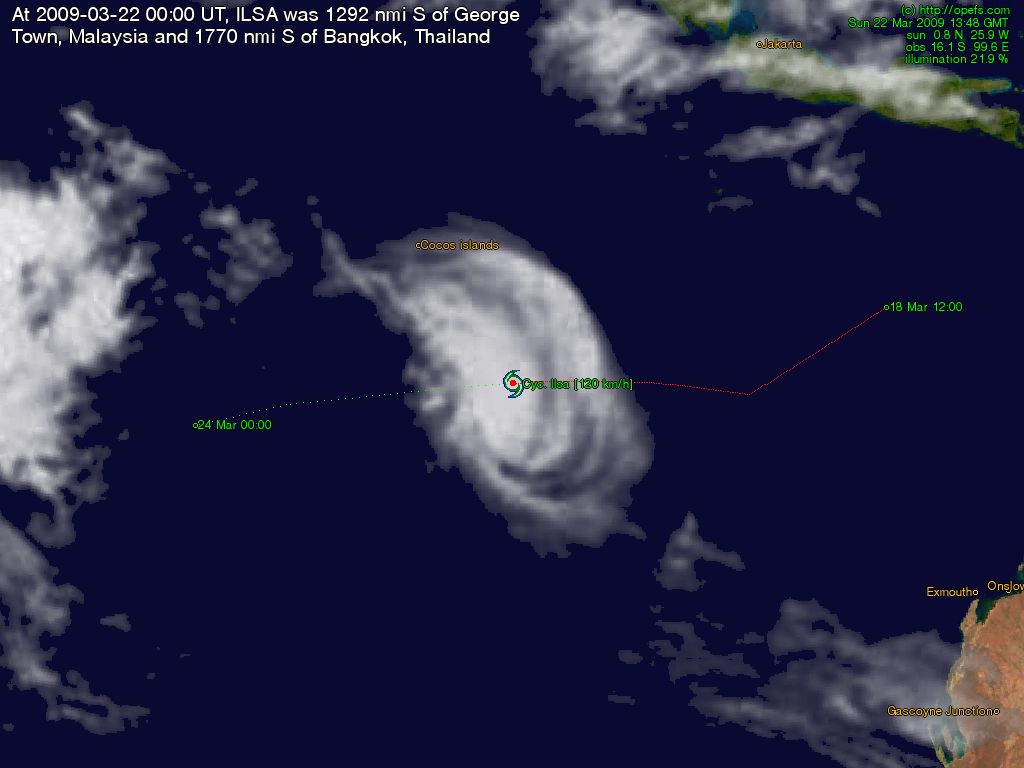Já agora...fica fica a escala utilizada na classificação dos furcaoes:
Tropical Storm
Winds 39-73 mph
Category 1 Hurricane — winds 74-95 mph (119-153 km/hr)
No real damage to buildings. Damage to unanchored mobile homes. Some damage to poorly constructed signs. Also, some coastal flooding and minor pier damage.
- Examples: Irene 1999 and Allison 1995
Category 2 Hurricane — winds 96-110 mph (154-177 km/hr)
Some damage to building roofs, doors and windows. Considerable damage to mobile homes. Flooding damages piers and small craft in unprotected moorings may break their moorings. Some trees blown down.
- Examples: Bonnie 1998, Georges(FL & LA) 1998 and Gloria 1985
Category 3 Hurricane — winds 111-130 mph (178-209 km/hr)
Some structural damage to small residences and utility buildings. Large trees blown down. Mobile homes and poorly built signs destroyed. Flooding near the coast destroys smaller structures with larger structures damaged by floating debris. Terrain may be flooded well inland.
- Examples: Keith 2000, Fran 1996, Opal 1995, Alicia 1983 and Betsy 1965
Category 4 Hurricane — winds 131-155 mph (210-249 km/hr)
More extensive curtainwall failures with some complete roof structure failure on small residences. Major erosion of beach areas. Terrain may be flooded well inland.
- Examples: Hugo 1989 and Donna 1960
Category 5 Hurricane — winds 156 mph and up (249 km/hr)
Complete roof failure on many residences and industrial buildings. Some complete building failures with small utility buildings blown over or away. Flooding causes major damage to lower floors of all structures near the shoreline. Massive evacuation of residential areas may be required.
- Examples: Andrew(FL) 1992, Camille 1969 and Labor Day 1935











